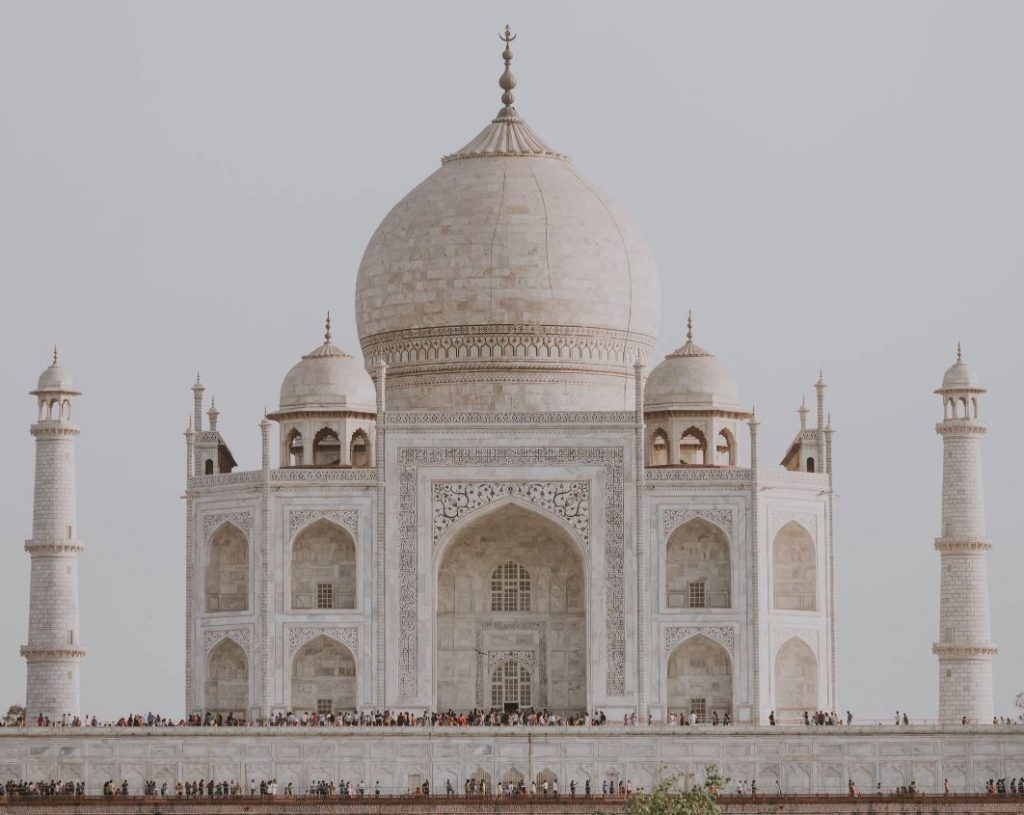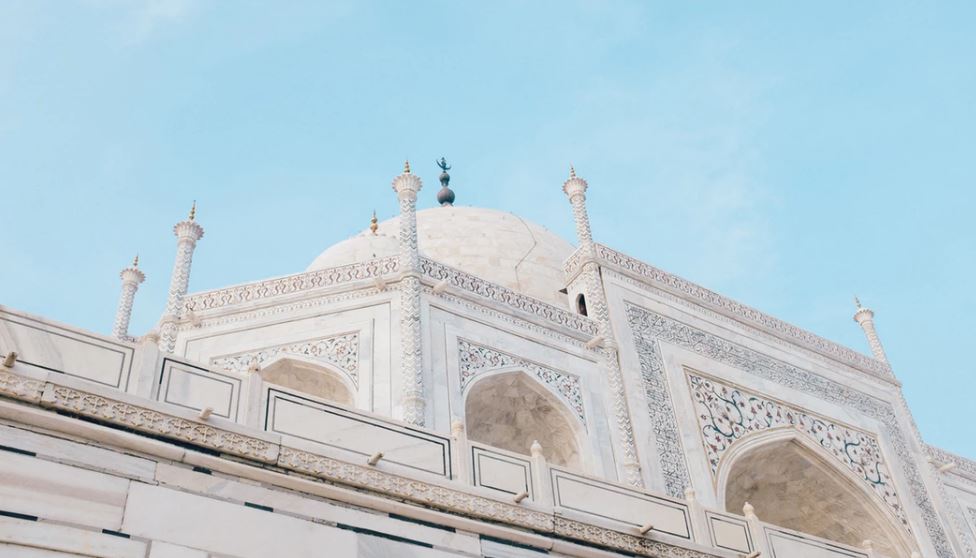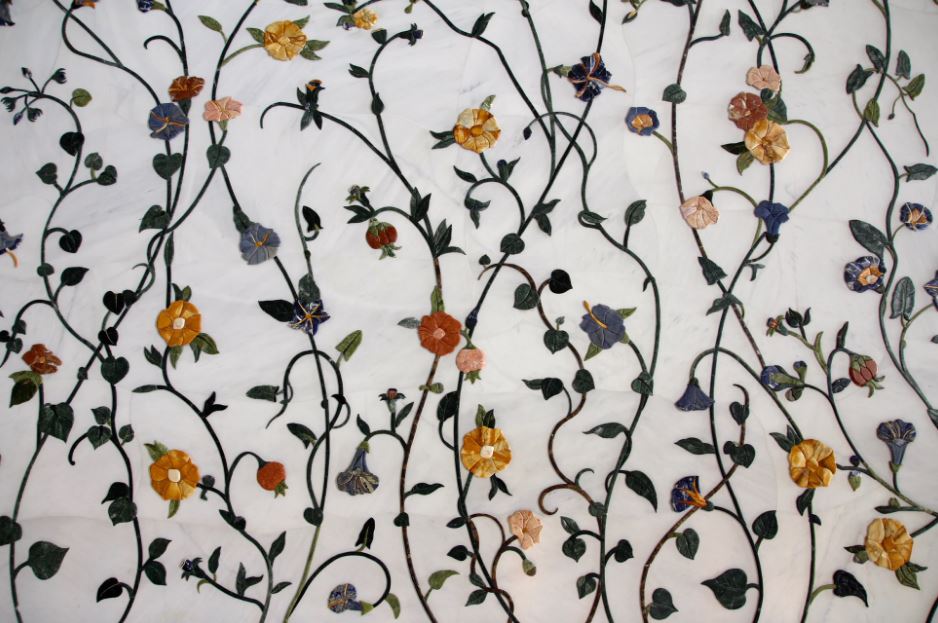Address
Dharmapuri, Forest Colony,
Tajganj, Agra,
Uttar Pradesh 282001
Directions: Google Maps
Support
Phone: 0562-2226431 / 2421204
Phone: 0562-2230230 (tourist police)
Email: agrauptourism@gmail.com
Email: info@tajmahal.gov.in
Website: Official Page
_______
About Taj Mahal
An emblem of eternal love, the Taj Mahal is the pride of India’s rich history, an epitome of sheer architectural beauty, resting across the banks of the River Yamuna in Agra, the former Capital city of the Mughal Empire.

Cradled as the “Crown of the Palaces” in Persian, the Taj Mahal is a white marble mausoleum, commissioned by the 5th Mughal Emperor Shah Jahan in memory of his wife Mumtaz Mahal, in 1631. Over 350 years old, the construction of the Taj Mahal took 22 years to complete, over an area of 42 acres, across the banks of the River Yamuna.
Awards and Recognition
Voted as the ‘one of the seven wonders of the world’ in 2007, and listed as a World Heritage Site by UNESCO in 1983, the Taj Mahal attracts nearly 8 million visitors annually, and is a popular tourist destination for newlyweds. The structural aesthetics of Taj Mahal, is a breath-taking visual ecstasy, and is a rich amalgamation of Persian design influence with Mughal architecture.
Architect and Building Typology
A 17th century historical monument, Taj Mahal neared completion in 1643, by the dedicated craftsmanship of 20,000 artisans, led by the Mughal court architect Ustad Ahmad Lahauri. The entire complex includes the mausoleum, the courtyard, the arched entry gates, the charbagh gardens, the mosque, the water bodies, and Minarets.

The Charbagh Gardens
Introduced by Babur, the Persian walled gardens, also known as Charbagh Gardens, are an integral part of the Taj Mahal Complex, and originally had roses, orchids, and daffodils, before the British invasion. Now, the gardens are more of ‘English Lawns’ bordered on three sides by a walled rampart, of red sandstone.
The Mausoleum
The Ivory-white marble tomb is the centerpiece of the complex, and stands designed using 4 octagons, capped by an onion –bulb shaped central dome, towering at 115 feet. Designed symmetrically, the entire tomb rests on a square plinth measuring 180 feet on each side, and stands framed by four minarets of 130 feet, one at each corner of the plinth.
An arched doorway adorns the four sides of the tomb, leading to the false tomb of Shah Jahan and Mumtaz Mahal, wherein the actual tombs are at lower levels. The minarets, divided into three floor levels with balconies, and lean outwards, to support the foundation stones from breaking apart, during quakes.
Interior Design & Construction
The basic design elements of Taj Mahal have Persian origins, and employ the use of calligraphy, abstract motifs, and geometric forms of pattern. Likewise, dado bas-reliefs, floral motifs, and incised drawings of flowers and vines, adorn the interior walls and ceilings.

The artisans, likely sourced the construction materials from India and Asian countries such as Tibet, Sri Lanka, and China, and employed over 1000 elephants to transport these materials to the construction site. The white marble from Makrana, stands inlaid with over 28 types of semi-precious stones, and inlay stones such as yellow marble, black marble, jade, and jasper.
Entry Gates
Entrance to the Taj Mahal complex, is through the three entry gates, at South, East and the West. The West gate has the longest queue lines, and is the most popular of the three and, serves as the main gate, commonly used by the Indian tourists. For viewing sunrise, the West gate is the better option, to avoid crowds in the morning.
Likewise, the East gate mostly preferred by foreign tourists is closer to high-end hotels, and has shorter queue lines, and the South gate is the least used, closer to low-end hotels, and perfect for budget travelers. Guided tours and audio guides are available at the entrance gates, near the ticket counters.
Vantage views of Taj Mahal
Best vantage views of Taj Mahal are from the Mehtab Bagh for sunset, the 360 view from the Agra Fort, the sunrise view from the riverbank, the frontal view from the gardens, and the full moon night view from the mosque.
How to Reach
Best visited after the monsoons, from Nov-Feb, the Taj Mahal is at 200 km from Delhi, and well connected by public transport. The nearest domestic airport at Agra is at 7km, and the nearest railway station is the Agra Cantonment, connected to all the major cities of India. Trains connecting Agra, with the rest of the country are the Palace on Wheels, the Shatabadi, the Rajdhani, and the Taj Express.
Opening Timings
Open on all days of the week, between 6:00am-7:00pm, except Fridays, the Taj Mahal remains open for night views, on every full moon, between 8:30pm-12:00am, and night views are temporarily on hold during Ramadan, every year.
Entrance tickets
Entry tickets to Taj Mahal for non-nationals cost INR 1100 for day visit and, INR 750 for night visit. The cost for Indian tourists is INR 50 for day visit and, INR 510 for night visit and, entry is free for children below 15. The night view tickets are for 30 minutes and booked online in advance, wherein day tickets sell near the entry gates from 10:00am-6:00pm. For sunset viewing, the tickets cost INR 300 for foreigners and INR 25 for Indians.
